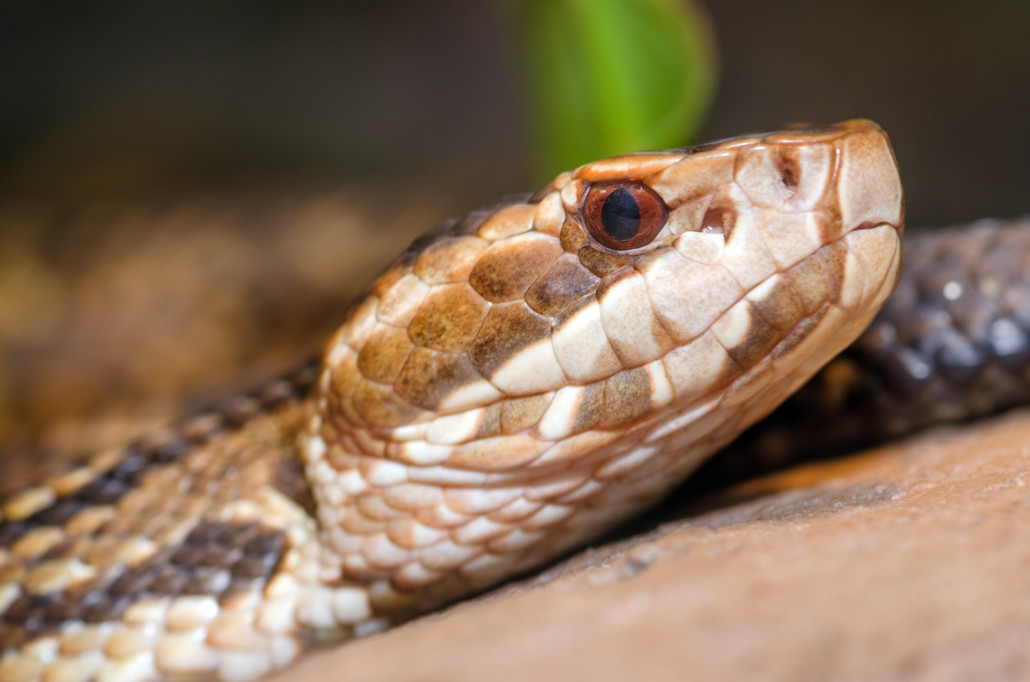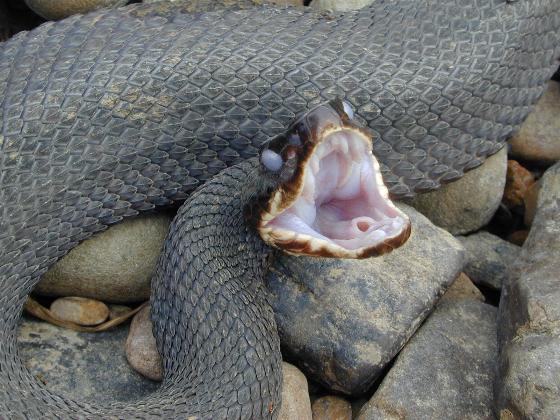I swear...flintknapper wrote:Yellow Bellied Water Snake.
Broad Band Water Snakes can vary widely in coloration and pattern. Could even appear to be almost a solid color… but the bands are present if you look closely.
Both snakes have the habit of flattening their heads (and bodies sometimes) to make themselves look larger. This can result in the head looking more triangular than it normally is, but a triangular head in itself…is NOT a reliable feature by which to identify.
In the Lower U.S. we have four venomous snakes (many species) that are INDIGINOUS.
1. Coral snake
2. Rattlesnakes
3. Moccasins/Cottonmouth
4. Copperheads
The last three (and all specie variations) are ‘Pit Vipers’, ALL have a distinctly triangular head with a noticeably narrower neck (even when juveniles). ALL indigenous pit vipers have an elliptical pupil of the eye.
The Coral Snake is easily distinguished from the pit vipers by its coloration alone. It does NOT have a triangular head and DOES have a round eye pupil. Its venom is neurotoxin. Of course, this snake would never be mistaken for a venomous water snake.
Water Moccasins (when mature) are noticeably ‘thick’ in build with respect to body length. They don’t have a long tapering tail like other harmless water snakes. But other water snakes do a pretty good job of mimicking a Moccasin/Cottonmouth.
The Yellow bellied Water Snake is often killed when mis-identified as a Cottonmouth. The Broadband and Diamond back water snake suffer greatly for looking like a Moccasin.
The only sure way to tell if an indigenous water snake is venomous is to note the pupil shape and/or note the scale arrangement of the bottom side of the tail AFTER the anal vent.
Venomous Water Snakes (indigenous to the U.S.) will have a single row of scales. Non-venomous (harmless) will have a double row.
And yes, I know either method of identification will involve getting closer to the snake than most are willing. Just saying….these are the only two foolproof indicators, aside from being bitten.
Most snakes under most circumstances are beneficial. If there is no pressing reason, please do not kill them. Hat is off to the OP….for relocating the snake.
STOP TALKING ABOUT SNAKE PUPILS!!!! STOP IT, STOP IT, STOP IT!!!
At a glance, what shape would you describe this obvious Water Moccasin's pupils as?

Next, how about this one? What shape would you describe this shedding Water Moccasin's pupils as??? Go ahead, take a stab at it...

The point is that it is foolish, and even dangerous to say things like "look at the pupils" since people will try and use this supposed info in the field and could get themselves hurt because of it.
As was correctly stated, there are only four venomous snakes that are native to North America. Learn to differentiate them at a glance without using stupid stuff like pupils, or insanely unhelpful information like what their anal vent looks like. Learn to use things like shape, size, coloration, scale keeling, and behavior... or just kill them all and move on.
